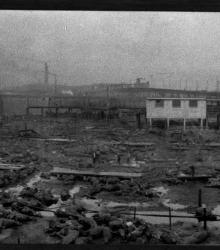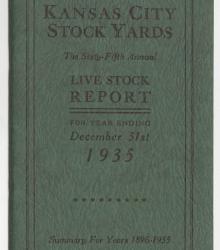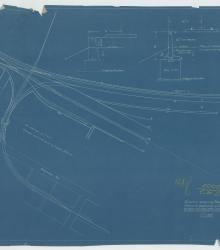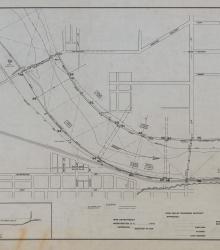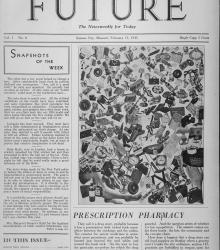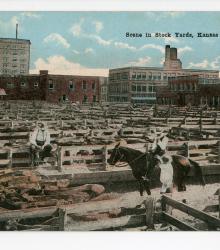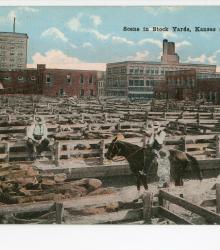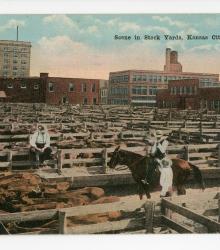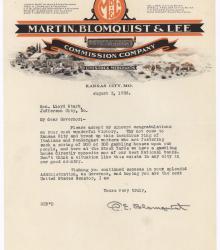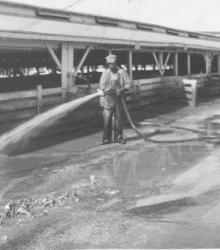A panoramic photograph showing a fire at the stockyards in Kansas City, Missouri. Many cattle were killed.
Stockyards
Livestock report prepared for the year ending December 31, 1935, for the Kansas City Stock Yards, detailing shipments and receipts of livestock throughout that year, as well as summarizing statistics from previous years. Statistics for 1935 are sorted by railroad, year, type of livestock, and by state.
Map depicting locations of railroad lines in the West Bottoms area of Kansas City adjacent to the Stockyards.
Set of 3 hand-drawn ink-on-linen maps showing the harbor lines for the Kansas River at Kansas City, Kansas, from Turkey Creek to the Argentine Wagon Bridge, showing U. S. Harbor lines, and Kaw Valley Drainage Districts modified lines. Prepared by the Chief Engineer, Drainage Board, for the Kaw Valley Drainage District.
Issue of the anti-corruption, Kansas City-based newspaper, Future: The Newsweekly for Today.
Postcard showing the stockyards in the West Bottoms of Kansas City, Missouri. The back of the postcard includes a short letter to J. Creedon of Rochester, New York from his brother.
Postcard showing the stockyards in the West Bottoms of Kansas City, Missouri. The back of the postcard includes a short letter to W. Mahlberg commenting that there is "plenty of beef here" in Kansas City.
Postcard showing the stockyards in the West Bottoms of Kansas City, Missouri. The back of the postcard includes a short letter to Mary A. Wilcotson of Webb City, Missouri from her daughter Clara.
Letter from C. E. Blomquist to Governor Lloyd C. Stark, congratulating him on Douglas's win, but requesting he "come to Kansas City and break up this insidious ring of Italians and Pendergast workers who are fostering such a string of 200 or 300 gambling houses upon our people."
There are world records for nearly everything, including cattle processing. And in September 1918, Kansas City broke them all. As World War I entered its final fateful months, the Kansas City stockyards handled more than 55,000 cattle in a single day and 475,000 for the month. That fall, during a remarkable three-month span, more than 1.3 million cattle passed through the city’s yards. The Kansas City cattle business was impressive, but add to these figures hundreds of thousands of sheep, hogs, and horses, and more than 3.3 million animals were yarded in the city. First seven, then 12, then 34 railroads brought these animals into the city and out again to distant markets.
